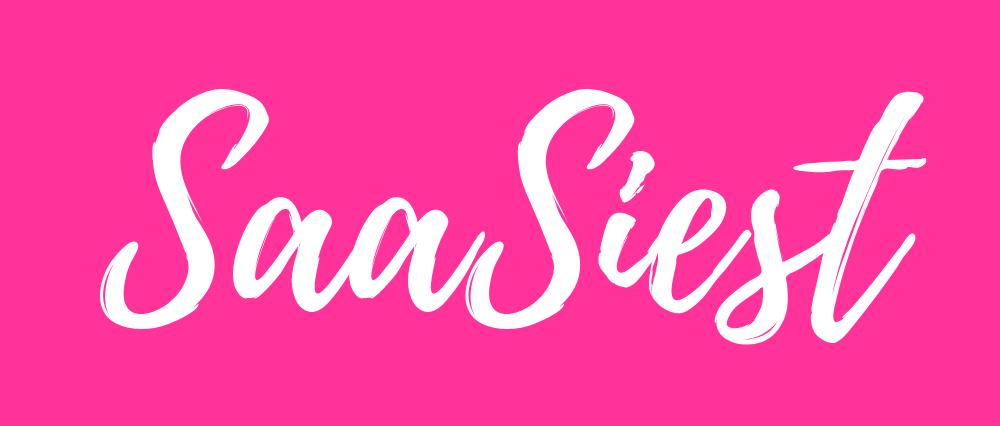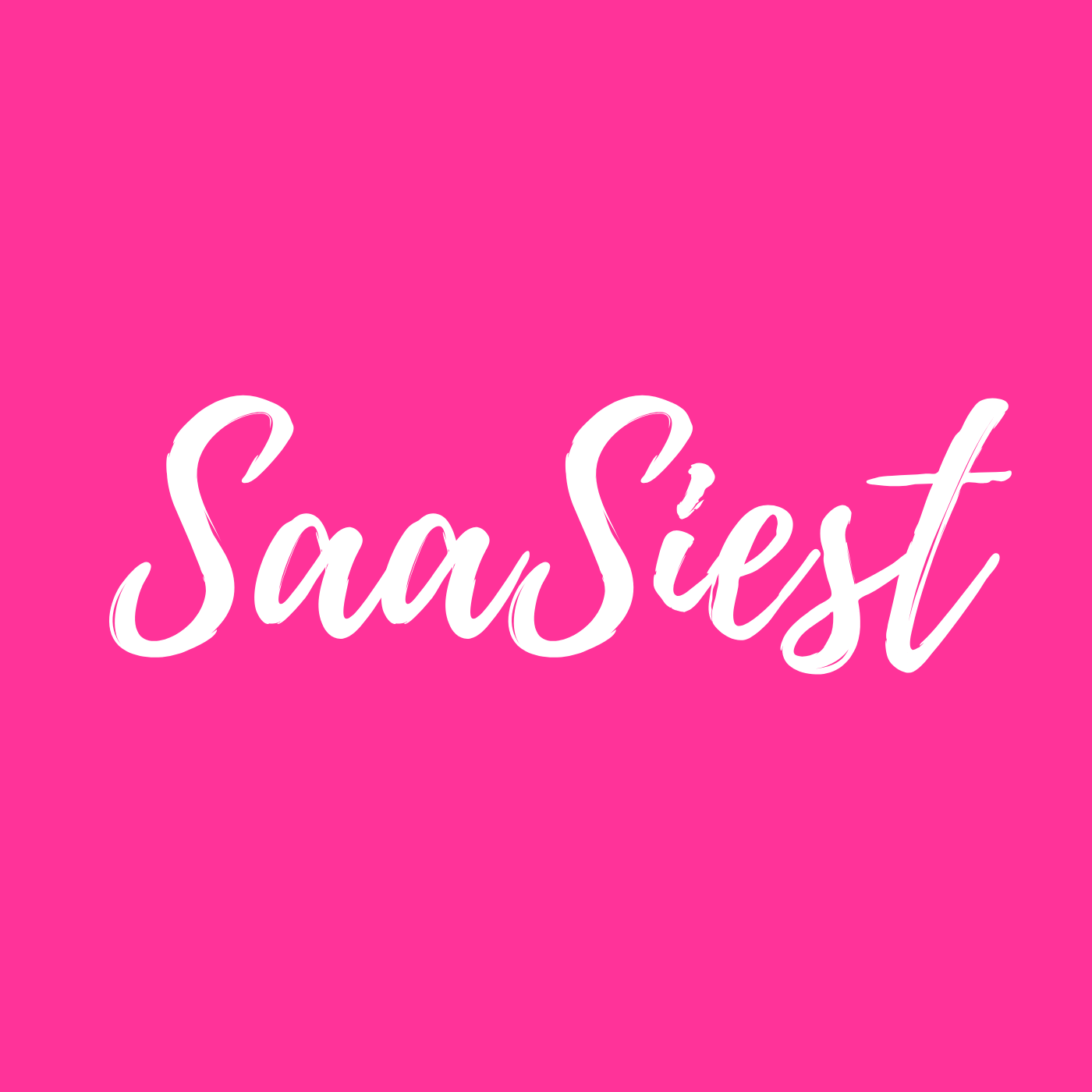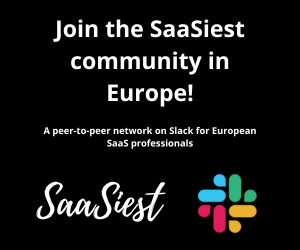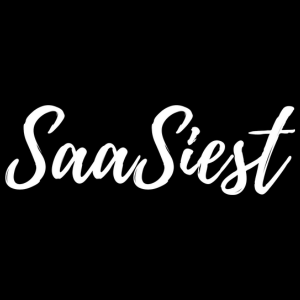How to Overcome Status Quo and Unstick Stalled Deals with Zero-Cost Tactics
In a world where every 2.7 seconds a “game-changing AI tool” promises to revolutionize your revenue motion, sales teams still find themselves stuck in the same place:
Chasing deals that go nowhere.
At SaaSiest 2025, Jen Allen-Knuth, Founder of DemandJen and with 18 years in B2B sales, made a powerful argument:
“Your biggest competitor isn’t another vendor – it’s your buyer deciding to do nothing at all.”
That “maybe later” mindset—the quiet killer known as status quo—is why nearly 40% of SaaS pipeline stalls or disappears without a closed-lost reason.
Here’s the problem: teams are great at competitive differentiation but rarely taught how to compete against inaction. Worse, most sales motions assume interest too early, treat curious browsers like committed buyers, and ask champions to do the heavy lifting.
Jen’s keynote outlined a simple truth: if you want to convert more pipeline in 2025, you must first learn how to defeat the status quo—not just the competition.
In this article, you’ll learn:
- Why better solutions often lose to “good enough”
- How to spot status quo in disguise
- Three free tactics to build urgency without pressure
- How to write outreach that gets responses (not unsubscribes)
- What to do when your champion isn’t enough
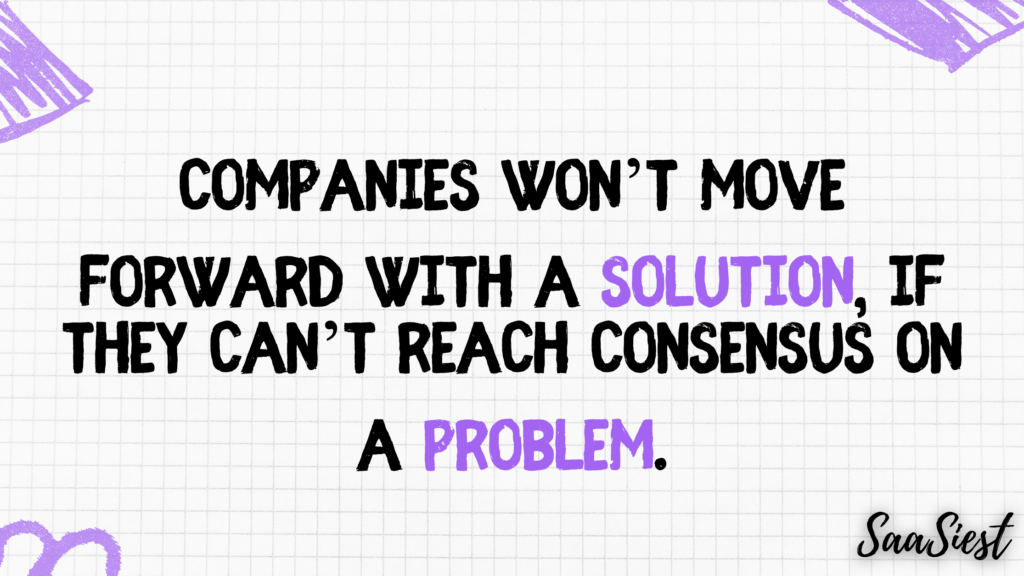
Why Better Doesn’t Win
Most sales messaging leans on being better, faster, or more efficient. But better only matters to buyers who are already dissatisfied. And most aren’t.
In her words:
“Better doesn’t beat good enough. And good enough is what we’re up against most of the time.”
The real challenge? Buyers rarely say they’re choosing status quo. They say:
- “Let’s revisit this in six months.”
- “We’re not prioritizing this right now.”
- “We’re aligned, just waiting for internal feedback.”
To sellers, those sound like soft yesses. But they’re actually unspoken no’s.
The result? Bloated pipeline, wasted follow-ups, and forecasting fiction.
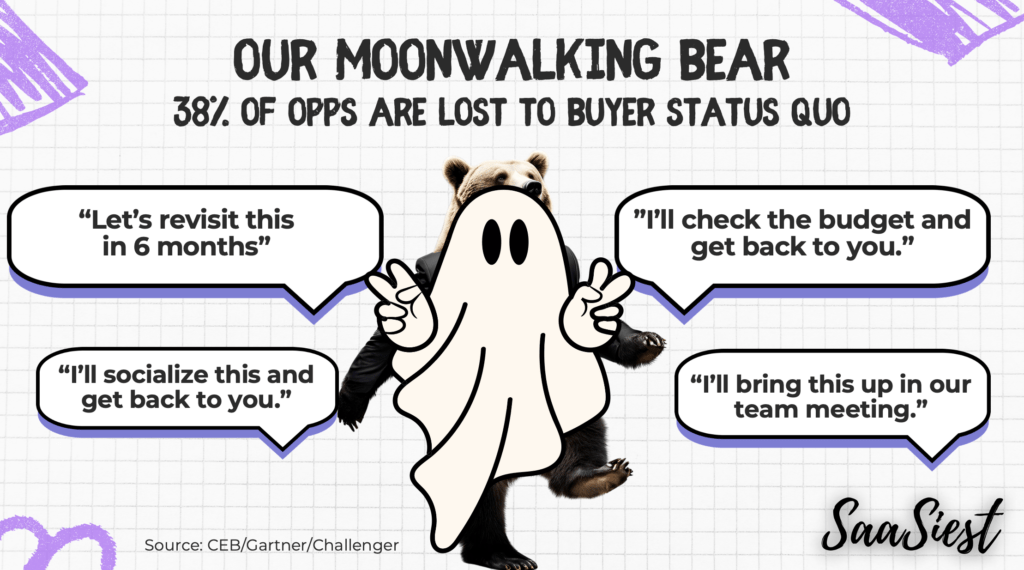
3 Tactics To Defeat Buyer Status Quo
1. Stop Treating Learners Like Buyers
Not everyone who attends a webinar or downloads a whitepaper is ready for a demo. Yet most follow-up assumes they are.
Jen distinguishes between:
- Hand-raisers: People actively seeking a solution
- Learners: People curious about a topic, but not yet in buying mode
Key Tactic: Follow up with educational insight, not sales pressure.
“We treat people like email addresses, not like humans. And learners are the ones most likely to engage if you meet them where they are.”
Instead of:
“Thanks for attending—would you like a demo?”
Try:
“Here’s something we didn’t cover in the webinar: 5 questions we use to size buyer pain. Let me know if it’s helpful—I can send more.”
This approach builds credibility and opens the door to future conversations without pushing buyers away.
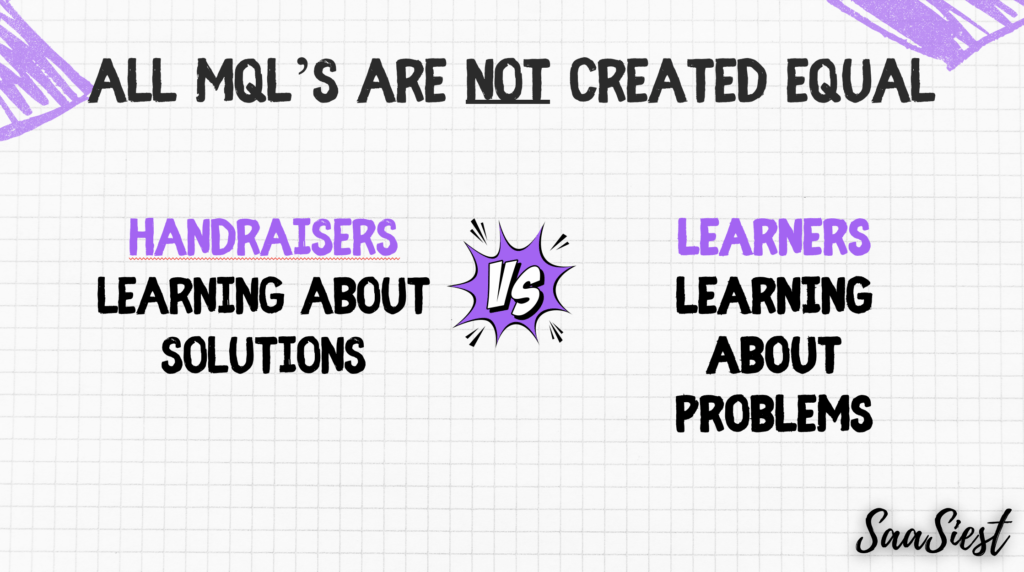
2. Prompt Curiosity, Don’t Push Product
Jen calls most outbound “the mall kiosk experience”—you weren’t looking, someone approached anyway, and now you’re walking faster to escape.
To stand out, outbound should reflect the buyer’s world and invite them to explore, not defend.
Use this 3-line formula:
- Observation: “Saw you just launched into the UK market…”
- Problem Prompt: “Not sure if that’s stretching your onboarding flow, but we’ve seen that happen before.”
- Peer Insight: “Another SaaS team ran into the same and changed their CS touchpoints—happy to share how.”
Tip: End with “either way,” not a desperate CTA.
“Either way, saw you’re also working with the American Cancer Society—great cause.”
It’s respectful, relevant, and gets responses.
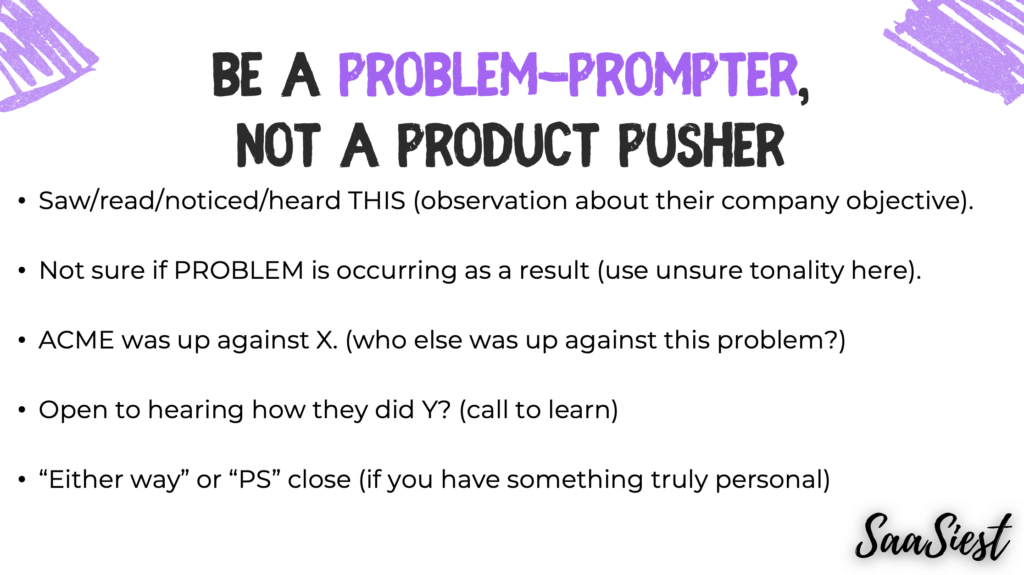
3. Support Your Champions – Don’t Rely on Them
Enterprise buying is messy. On average, 11.1 stakeholders are involved in a single B2B decision. And each one can kill a deal.
Too often, sellers hand off a deck to their champion and hope for internal traction. Instead, Jen suggests you:
- Slow down before jumping into solution alignment
- Help the champion build problem alignment first
- Reduce their effort by writing the internal message for them
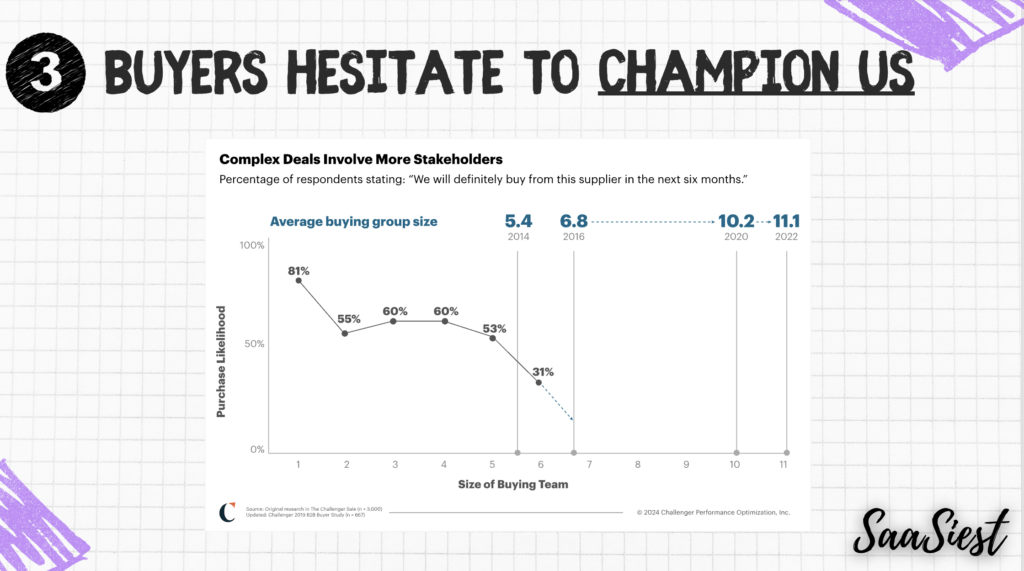
Example:
“I asked Sally to meet with us—she’s worked with other companies on this. Any concerns with spending time on this together?”
This removes friction and avoids relying on a single advocate to carry your deal across the finish line.
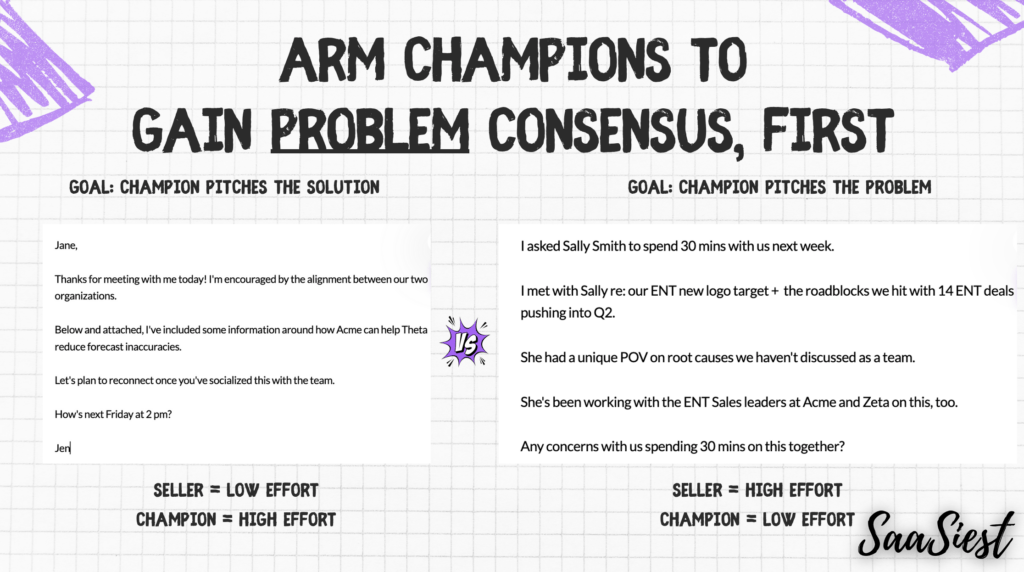
From Objection-Handling to Objection-Preventing
Jen closed her keynote with a simple framework:
“In sales, you get to choose your hard. You can spend effort early crafting thoughtful, buyer-relevant messaging… or you can spend it later, trying to overcome resistance.”
Here’s how to ensure you’re choosing the right hard:
- Audit your cold emails and follow-ups – do they help buyers see a reason to change now?
- Categorize leads into “learners” vs. “hand-raisers” – then adjust follow-up accordingly
- Treat curiosity like a buying signal—not a conversion point
- Arm your champions with alignment tools – not just assets
TL;DR: What SaaS Teams Should Do Next
If you’re a CRO, VP Sales, or RevOps leader, ask your team this question:
“Are we messaging to beat a competitor—or to beat buyer apathy?”
If it’s the former, you’re likely missing deals that should have closed.
Jen’s session is a powerful reminder that the best sales orgs aren’t just good at selling. They’re great at helping buyers want to change.
Watch Jen’s Full SaaSiest 2025 Keynote
Get the full breakdown on status quo selling, outreach rewrites, and problem alignment – Watch the session here.
